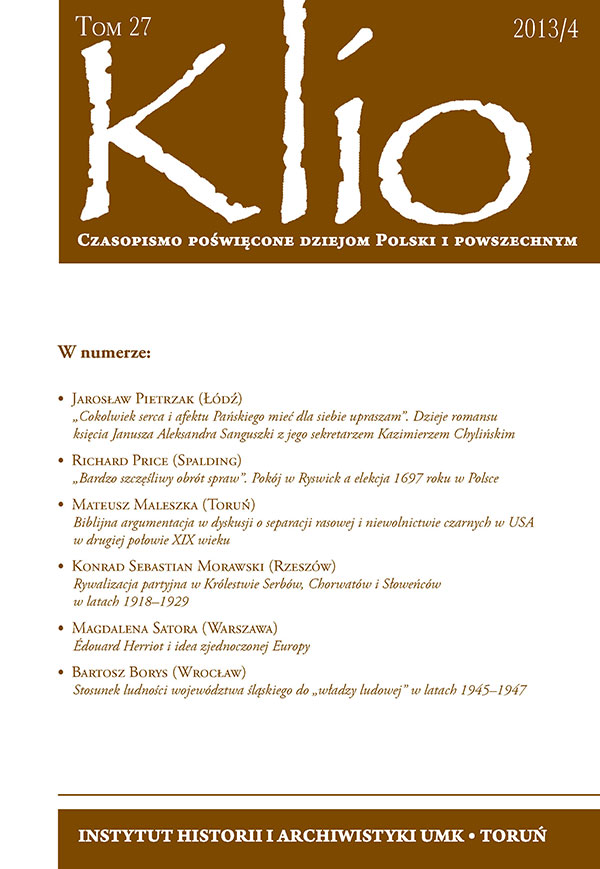Stosunek ludności województwa śląskiego do „władzy ludowej” w latach 1945–1947
DOI :
https://doi.org/10.12775/KLIO.2013.055Résumé
Relations between Inhabitants of Silesian Voivodeship and Polish Communists in 1945–1947
(Summary)
In the years 1945–1947 Silesian Voivodeship was inhabited by the indigenous people, immigrants (displaced from Eastern Borderlands due to the territorial changes of Poland after World War II), internal migrants and re-emigrants (mostly miners from Belgium and France). In vast majority of cases the inhabitants’ attitudes towards the communist regime depended on their former territorial provenance.
Immigrants and indigenous people harshly criticized communists from Polish Worker’s Party. The first group has been living under the communist regime when Eastern Borderlands were occupied by the Soviet Union. Those people have seen life full of national and class violence done by Red Army and NKVD. They were disappointed because of their homeland lost, state dependency on the USRR and legal disputes with the other groups of people. Meanwhile they were accusing the second group of supporting German politics during the World War II. Called “Germans”, indigenous people were objects of prejudices. Immigrants and Polish authorities were hostile towards them therefore their attitude towards new polish regime couldn’t be positive. Both of that groups, as a supporters and active members of Polish People’s Party, which was the only one legal alternative to the Polish communists, were exposed to repressions. Re-emigrants and internal migrants were the biggest supporters of communists.
The first of them have been shown as the example of loyalty in comparison with the other Polish emigrants (especially in United Kingdom). However internal
migrants were the biggest base of recruitment for new communist officials, PWP members and Ministry of Public Security staff. Authorities have offered their supporters once in a lifetime opportunity to change their lives completely which was tempting both for communist idealists and for people who have been
repressed under Second Polish Republic government.
Described above attitudes towards communist regime are the typical examples showing well the differences among various groups composing a total population in Silesian Voivodeship during the years of significant political changes. It needs to be emphasized that inside all of those groups opinions about communist regime weren’t homogeneous and could differ a lot. Nevertheless focusing on general attitudes enables to observe and understand better the relations between Silesian Voivodeship inhabitants and Polish communists.
Téléchargements
Publiée
Comment citer
Numéro
Rubrique
Stats
Number of views and downloads: 729
Number of citations: 0



